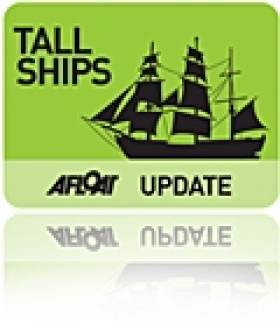Displaying items by tag: SquareRigger
Sail Training Ireland Assumes Mantle of Asgard
Writing in the Irish Independent on Saturday, WM Nixon welcomes the introduction of Sail Training Ireland as a big step towards getting Ireland back into tall ship sailing.
Nixon also pays tribute to Ireland's previous square-rigger, Asgard II, which held its own among taller competitors for almost three decades before its sinking in the Bay of Biscay in 2008.
That ship was also remarkable for being "one of the very few government owned and run sail training ships in the world".
In the wake of Asgard II, a new approach is being taken with Sail Training Ireland - which is an officially recognised voluntary trust, actively supported by the Irish Sailing Association, that is open to anyone and free to accept donations and corporate endowments.
"The sailing community and all those interested in promoting maritime affairs now have an opportunity for self-reliance," writes Nixon, who notes that while we get back on the road to having our own tall ship, Sail Training Ireland will be able to place Irish trainees on other ships already sailing for invaluable experience.
U.S. Coast Guard Cutter Eagle to visit Waterford
"This is a great opportunity to tie the Eagle's rich history directly into the annual cadet summer training at sea," said Capt. Eric C. Jones, commanding officer. "By the time the ship arrives in Hamburg, the cadets will have shared in an experience that the Coast Guard Academy has shared with prospective officers for 65 years- learning to live and work on the ocean aboard a tall ship."
USCG Eagle is also the only active square-rigger in U.S. government service. Originally the three-masted barque was commissioned for the German Navy. In 1936 the vessel was launched as Horst Wessel from the Blohm & Voss Shipyards, Hamburg. A decade later the 295-foot vessel was taken as war reparation to the U.S Government.
Looking for further reading on Tall Ships in Ireland? Click the links below:
Click this link to read all our Tall Ships Stories on one handy page
Previewing Ireland's Tall Ships 2011 Season
Can Ireland Get a New Tall Ship?





























































